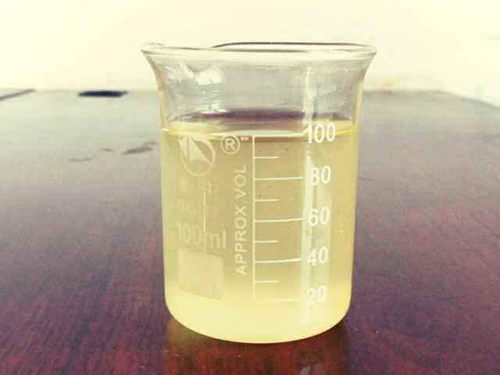Effective Water Treatment Solutions Using HEDP for Improved Quality and Safety
The Role of HEDP in Water Treatment A Comprehensive Overview
Water treatment is an essential process for ensuring safe drinking water and maintaining the efficacy of industrial water systems. Among the various chemicals used in water treatment, Hexamethylenediamine-N,N,N’,N’-tetra(methylene phosphonic acid) or HEDP has emerged as a crucial additive. This article explores the significance of HEDP in water treatment, its mechanisms, applications, and benefits.
Understanding HEDP
HEDP is a phosphonic acid derivative known for its chelating properties. As a water-soluble biocide and corrosion inhibitor, it effectively binds with metal ions, preventing their precipitation in aquatic systems. Its chemical structure allows for a high degree of stability and reactivity, making it suitable for a variety of applications, particularly in the treatment of cooling water systems and wastewater.
Mechanism of Action
HEDP functions primarily through the chelation of metal ions such as calcium, magnesium, and iron, which are common culprits in scaling processes. These metals can precipitate out of solution, leading to scale formation that impairs system efficiency. By binding with these ions, HEDP inhibits scale formation, thus maintaining optimal operational conditions.
Additionally, HEDP exhibits anti-corrosion properties, protecting metal surfaces from oxidative damage and extending the lifespan of industrial equipment. Its effectiveness is attributed to the formation of a protective layer on metal surfaces, which minimizes the interaction between the metal and corrosive elements in water.
Applications in Water Treatment
1. Cooling Water Systems HEDP is widely used in cooling towers and industrial cooling systems to manage water quality effectively. Its ability to control scale formation and inhibit corrosion makes it indispensable for maintaining the efficiency of heat exchange processes.
2. Boiler Water Treatment In boiler systems, HEDP contributes to the prevention of scaling and corrosion, which can lead to reduced heat transfer efficiency and increased energy consumption. It is often used in conjunction with other treatment chemicals to enhance the overall effectiveness of the water treatment program.
3. Wastewater Treatment HEDP can be employed in wastewater treatment facilities to manage metal ions and prevent the formation of insoluble precipitates. By ensuring that metals remain in solution, HEDP helps to ease the filtration and separation processes during treatment.
hedp water treatment

4. Descaling Agents HEDP is also utilized as a descaling agent in various applications, including household cleaning products and industrial maintenance. Its ability to dissolve existing scales aids in restoring the functionality of equipment.
Environmental Considerations
One of the advantages of HEDP is its relatively low environmental impact compared to other phosphorous-containing compounds. It is biodegradable under certain conditions and poses lower risks of eutrophication, making it a preferable choice in eco-friendlier water treatment formulations. However, it is essential to monitor its usage and concentration levels to ensure compliance with environmental regulations.
Benefits of HEDP in Water Treatment
1. Efficiency Improvement By preventing scale and corrosion, HEDP enhances the overall efficiency of water systems, resulting in energy savings and reduced maintenance costs.
2. Versatility HEDP’s applicability in various water treatment contexts—from cooling towers to wastewater processing—highlights its versatility and utility as a multifunctional additive.
3. Cost-Effectiveness The use of HEDP can lead to significant cost savings in the long term due to reduced downtime and maintenance requirements, making it a financially advantageous option for industries reliant on water systems.
4. Safety and Compliance With stringent water quality regulations in place, the use of HEDP allows industries to meet compliance requirements while ensuring safe operational practices.
Conclusion
HEDP is a vital component of modern water treatment practices, offering multiple benefits ranging from scale prevention to corrosion inhibition. Its effectiveness in various applications underscores its significance in maintaining water quality and operational efficiency in industrial settings. As industries continue to prioritize sustainability and environmental responsibility, HEDP stands out as a reliable, environmentally considerate option for water treatment solutions. By investing in HEDP and understanding its mechanisms, organizations can enhance their water treatment programs, ultimately leading to safer and more efficient operations.
-
Dodecyldimethylbenzylammonium Chloride: High-Purity DisinfectantNewsAug.30,2025
-
2-Phosphonobutane-1,2,4-Tricarboxylic Acid: Scale & CorrosionNewsAug.29,2025
-
Premium Isothiazolinones | Broad-Spectrum Biocidal SolutionsNewsAug.28,2025
-
LK-319 Special Scale And Corrosion Inhibitor For Steel Plants: Advanced Solutions for Industrial Water SystemsNewsAug.22,2025
-
Flocculant Water Treatment: Essential Chemical Solutions for Purification ProcessesNewsAug.22,2025
-
Isothiazolinones: Versatile Microbial Control Agents for Industrial and Consumer ApplicationsNewsAug.22,2025





